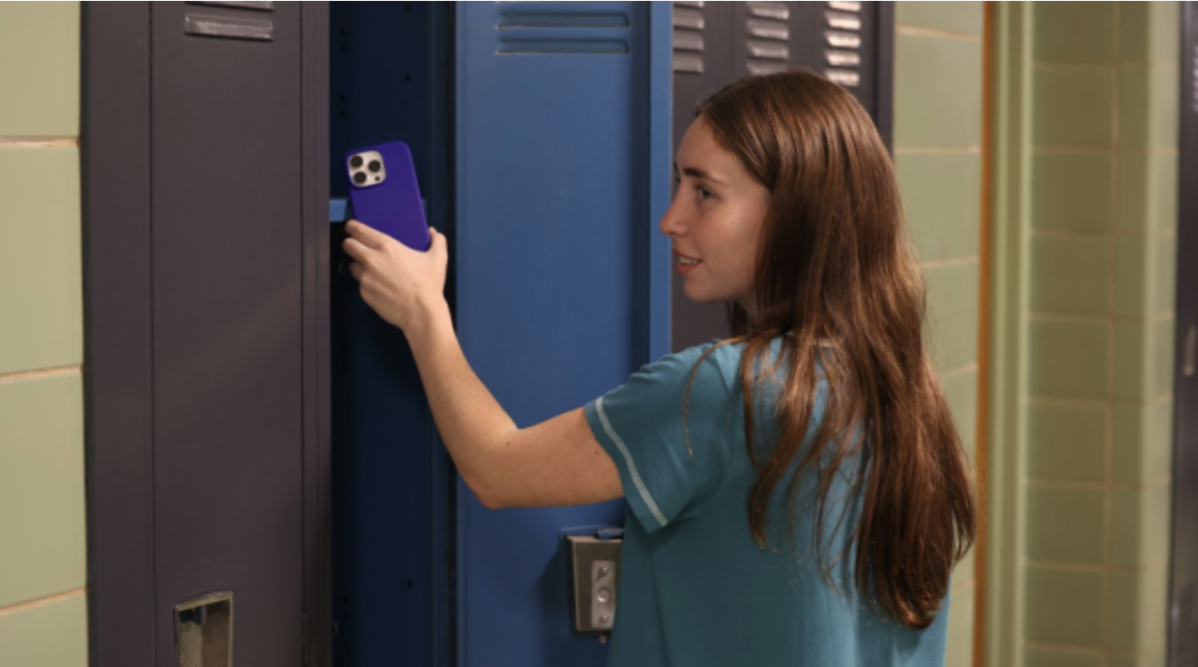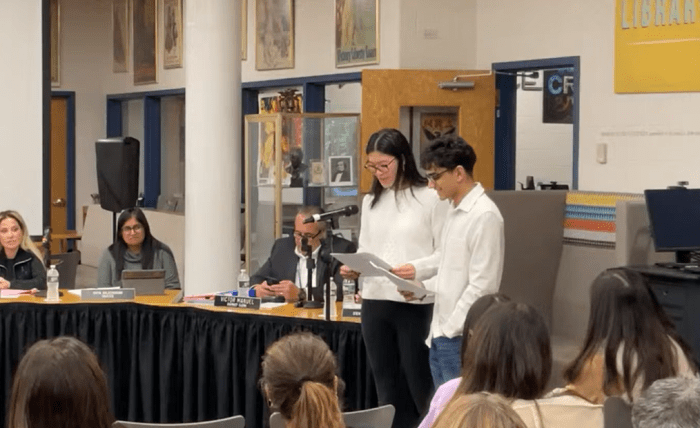New York just put every student’s cell phone on Do Not Disturb—permanently.
As Jericho students started their school year, they were one of the first student bodies in the state to adjust to a new state-wide cell phone ban, enacted in schools across New York state by Gov. Kathy Hochul.
The new policy states that “students are not permitted to use internet-enabled electronic devices during the instructional school day or from ‘bell to bell.’”
This policy reflects the state’s intent to create “distraction-free schools,” all while improving students’ mental health and providing new opportunities for students to engage with one another throughout the school day.
When Jericho students entered their first-period classes on Wednesday, Aug. 27, they found teachers using some class time—typically reserved for creating crucial first impressions—to emphasize the significance of the new “bell-to-bell” phone policy.
Unlike last year, when Jericho adopted a policy banning cell phones exclusively during instructional periods, cell phones are now also banned during lunch and free periods. To no surprise, many students feel bitter toward the new policy.
“Last year’s policy felt much easier to digest. We understood that [cell phones] could be distracting in the classroom, but also being banned during free periods feels excessive,” said Alan L., class of 2026.
Jeffrey G., class of 2026 said, “Even as my friends and I were walking in the halls, we could see and feel the difference the policy was making.”
Students’ dissatisfaction with the state policy is to be anticipated, as marked student over-reliance on cell phones was a catalyst for implementing the ban. In his acclaimed book, “The Anxious Generation,” Jonathan Haidt has been credited with sparking conversation surrounding a need for national cell phone policies, as he claims that cell phones are detrimental to Gen Z’s mental wellness.
Haidt says that cell phones are “a portal in [Gen Z’s] pockets that called them away from the people nearby and into an alternative universe that was exciting, addictive, [and] unstable.” The addictive nature of cell phones has been the foundation of lawmakers’ unified agreement to pass cell phone bans on a state-wide and even national level.
One such proponent of the state’s bell-to-bell cell phone ban is state Assembly Member Charles D. Lavine, who said, “I support [the cell phone ban] because I believe that cell phones can be a great distraction in the classroom. So, I was very happy to vote for this.”
“We have received next to no communications against the cell phone policy, which kind of surprised me because it did get quite a bit of attention in the news and the media,” he said. Lavine echoes the idea that this cell phone policy and its implementation were forged in a united, bipartisan effort forged by lawmakers sharing a unifying concern: the well-being and education of children.
Advocates of the policy state that the absence of cell phones in the classroom benefits students’ cognitive function, leading to improved attention, memory, interpersonal, and critical thinking skills.
Psychologist Wendi Goldstein said, “There are certain situations where if students learn how to manage their phone usage, it can be beneficial during learning time and times when they’re supposed to be interactive with their friends. I definitely think that the ban is good because it allows students to engage more with each other, to be more focused. It takes 23 minutes for a student to refocus after being on their phone. I think it’s just a better learning environment.”
Backed by both research and expert opinion, the new ban reclaims 23 minutes of students’ attention throughout the 40-minute class period, leaving students on course with the state’s intent to foster continued growth and achievement in the classroom.
As students settle into their daily lives and the ban becomes routine, they are challenged to prioritize face-to-face interactions in a world full of screens.
In September of 2026, each district, charter school, and Board of Cooperative Education Services will be required to publish an initial report on the effects of the state’s policy. Only time will tell if putting students’ phones on “Do Not Disturb” was a step in the right direction or just another speed bump on the road to distraction-free schools; what is certain is that Jericho was buckled in and ready to ride toward success before many others.
Bhavin Balgobind and Mia Shu are student reporters for the “JerEcho,” the Jericho High School student newspaper



































